Published August 8, 2025 01:51PM
Destinations & Things To Do
Escape the Heat: Best European Coastal Destinations
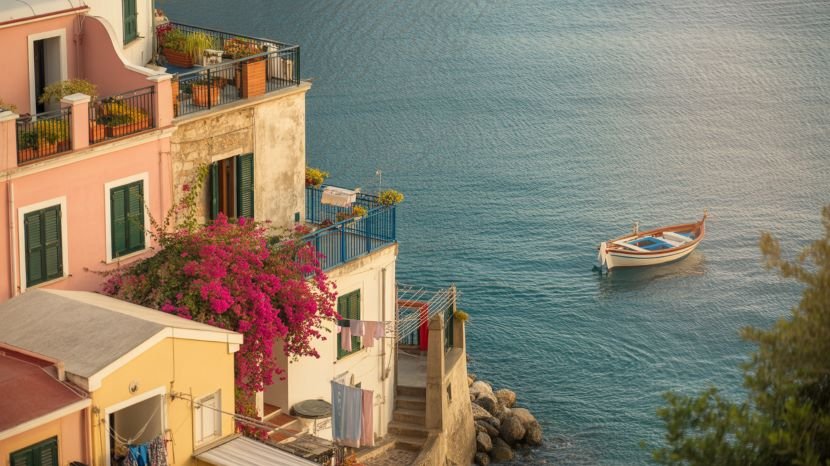
Published on
August 8, 2025 |
When Southern Europe turns up the heat, the Mediterranean’s charm can turn into a furnace. Luckily, cooler European coastal destinations, calmer coastal stretches are just a plane and often a train ride away. Nordic beaches, Baltic coves, and forgotten inlets are ready to greet you with gentle sea breezes and far away cliffs. Trade the crowded umbra of the Costa for the hush of ochre sands in Iceland or the misty bays of Norway. This quick guide spots Europe’s quietest sea escapes, where the only sweat on your brow comes from sunshine, not crowds. Pack your sun hat, grab your towel, and let’s go chill by the water.
1. Germany’s Baltic Coast: White Sands and Dark History
Located along the northeastern coast of Germany, the island of Rügen offers visitors a perfect blend of beauty and history. Known for its white sandy beaches and dramatic cliffs, this destination is also home to sites with a darker past. A visit to Prora, a vast seaside complex originally built by the Nazis as a holiday resort, offers a glimpse into Germany’s turbulent history. Today, the complex stands as a reminder of the country’s past, while the surrounding area remains peaceful and scenic, with walking paths through rolling countryside.
A great way to experience the area is by taking a coastal ferry from Lauterbach to the charming village of Baabe, followed by a leisurely walk or cycle. Don’t miss the steam train ride back, adding a touch of nostalgia to your journey. For nature lovers, a hike along the cliffs that inspired the works of Caspar David Friedrich offers breathtaking views over the Baltic Sea.
2. Denmark’s Underrated Danish Riviera: Beaches and Seaside Charm
If you’re looking for a quieter alternative to the crowded Mediterranean beaches, the Danish Riviera provides the perfect escape. Known for its clean waters and relaxing atmosphere, the coastline near Gilleleje, a quaint fishing village about an hour’s drive from Copenhagen, is ideal for those who want to enjoy the sea without the crowds. Denmark’s summer months fall in July, meaning you can visit in August and enjoy the beaches mostly to yourself.
To make the most of your stay, book a self-catering summer cottage and indulge in local treats like ice cream from Hansens and fresh seafood at the Gilleleje harbour. Explore cultural attractions like Louisiana Modern Art Museum and Hamlet’s Castle in Helsingør, or simply relax by the sea, soaking up the peaceful atmosphere of this off-the-beaten-path location.
3. Poland’s Hel Peninsula: A Seaside Escape Full of Charm
A unique and somewhat lesser-known destination, the Hel Peninsula in northern Poland offers a fantastic coastal getaway. Accessible by ferry from the port of Gdańsk, the peninsula is home to pristine sandy beaches, pine forests, and the picturesque village of Hel, where local fishermen sell hot smoked fish right off the boat.
Hel is famous for its rich natural beauty and wildlife, especially its seals. Whether you’re relaxing on the beach or hiking through the pine forests, this tranquil spot is perfect for a peaceful retreat. The ferry ride past the monumental shipyards of Gdańsk adds an element of adventure to your journey, making the trip an experience in itself.
4. Sweden’s Björkö Island: A Quiet Paradise in the Gothenburg Archipelago
Sweden’s Gothenburg Archipelago is a tranquil and underexplored region that offers visitors a peaceful retreat with a touch of Swedish charm. Just a 30-minute ferry ride from Gothenburg, Björkö Island is a quiet paradise ideal for a relaxed beach holiday. The island boasts great swimming spots, beautiful beaches, and delicious local seafood, making it perfect for a laid-back getaway.
Take a stroll through the island’s picturesque surroundings, where you’ll find microbreweries serving locally brewed beer and restaurants offering fresh fish. For those seeking adventure, the Liseberg theme park in Gothenburg provides a fun day out, with exciting rides and attractions but without the overwhelming crowds typical of larger parks.
5. Finland’s Åland Archipelago: Rowing Through Thousand Islands
For those looking to get off the beaten path, Finland’s Åland Archipelago is a stunning destination with thousands of islands to explore. Situated between Finland and Sweden, Åland offers a peaceful escape with its beautiful landscapes, charming villages, and unique cultural experiences. You can cycle between the islands, stopping at traditional boat sheds, and sample local delicacies like smoked herring and cardamom pancakes.
A special highlight of Åland is the opportunity to row between islands, using ancient wooden oars, giving you a truly authentic experience of this unique part of the world. If you’re looking for an adventure that combines culture, history, and nature, Åland is the perfect destination.
6. Northern Norway: Arctic Beaches and Dramatic Landscapes
If you’ve ever dreamt of experiencing a beach holiday in the Arctic, northern Norway offers an unexpected yet breathtaking alternative. The Lofoten Islands and Andøya, two of Norway’s most northern islands, are home to long, sandy beaches and dramatic mountain backdrops. In August, temperatures are surprisingly mild, making it the perfect time to enjoy the beach despite being so far north.
Bleik Beach, located on Andøya, is one of Norway’s longest and most picturesque beaches, with white sands and turquoise waters. It’s a quiet spot, ideal for swimming or just relaxing by the sea. Nearby, whale watching and puffin spotting provide additional activities for nature enthusiasts.
7. France’s Brittany: Idyllic Island Escapes
For a classic coastal getaway with a French twist, consider the beautiful island of Île de Bréhat off the coast of Brittany. A short ferry ride from Paimpol, this island is known for its rocky coves, quaint villages, and lush, green landscapes. The Camping Panorama du Rohou offers stunning views of the island, making it the perfect base for exploration.
Rent a bike or simply walk to explore the island, stopping at its charming lighthouses and enjoying a traditional Breton galette at one of the local restaurants. The island comes alive with festivals, including Les Scènes de Bréhat, an annual live music event that celebrates the region’s vibrant culture.
Travel Tips for a Cooler European Coastal Escape
- Travel Off-Peak: Many of these destinations see fewer tourists outside the main summer months. Consider traveling in late spring or early autumn for the best weather and quieter experiences.
- Self-Catering: To make your trip more affordable and flexible, opt for a self-catering cottage or apartment. Many destinations offer well-equipped options with beautiful views of the sea.
- Public Transport and Ferries: Many of these destinations are easily accessible by public transport or ferries, making them perfect for an eco-friendly trip.
- Pack Smart: While temperatures may be cooler than in the Mediterranean, the weather can still be unpredictable. Pack layers, sunscreen, and appropriate footwear for outdoor activities.
These lovely European coastal spots are just the ticket for anyone wanting to avoid the heat and crush of visitors at the big-name beaches. Picture yourself walking the green, breezy Baltic coast of Germany, pedaling your bike among the little islands of Åland, or unwinding on the peaceful shores of Sweden’s Björkö Island. You get gorgeous nature, a dash of local culture, and the time to really chill out. Forget the blazing Mediterranean sun these cool coastal gems are your best summer call.
Destinations & Things To Do
Artificial Intelligence Helped Rescuers Find a Climber’s Remains
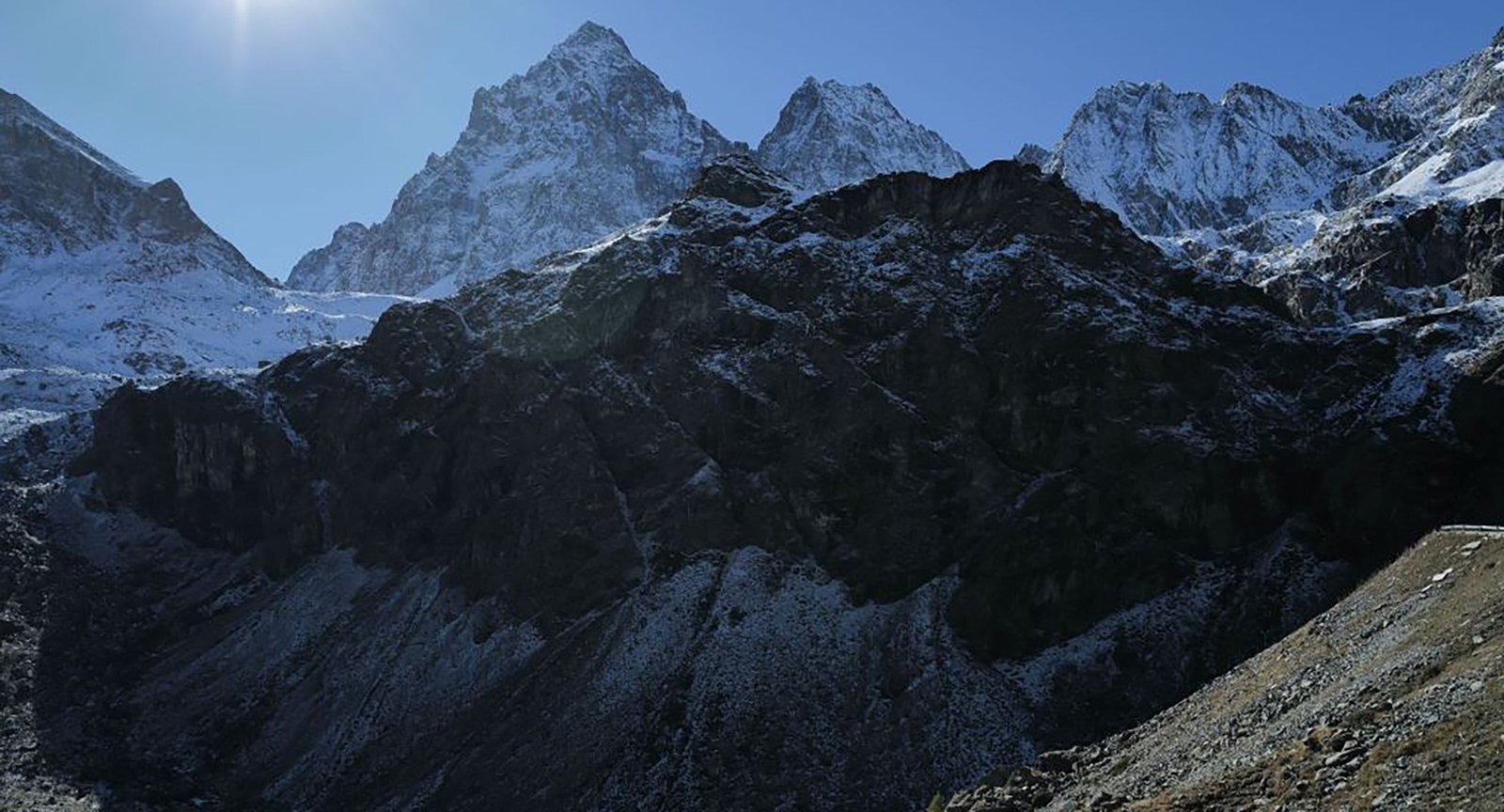
Officials in Italy used a combination of flying drones and AI software to locate the remains of a man who vanished in September
Monviso mountain towers above Turin (Photo: Vittorio Zunino Celotto / Getty Images)
Back in September 2024, a 64-year-old climber went missing in Italy’s Cottian Alps.
In late July, rescuers finally found his body, using a combination of flying drones and an advanced artificial intelligence software program, according to WIRED Italia.
Nicola Ivaldo, a doctor from Liguria, disappeared on the north face of 12,602-foot Monviso on September 14. Colleagues reported him missing when he failed to show up at work two days later, and search efforts began on September 17.
Ivaldo was an experienced mountaineer, but he was climbing alone. Monviso, which sits near the French border roughly 40 miles southwest of Turin, is a rugged, technical peak.
He also had not told his friends or family his intended route. However, before his disappearance, Ivaldo’s cell phone had connected to a cell tower north of the mountain, so rescuers believed he was attempting to climb Monviso from the north, likely via the peak’s northwest ridge.
Over the next several days, drones, sniffer dogs, and helicopters began poring across the northern and western slopes of Monviso, scouring a search area of 452 acres. But the rugged, dangerous terrain, coupled with bouts of foul weather and poor visibility—wind, rain, fog, and snow—stymied search and rescue efforts. By October, early winter snows had fallen on the mountain, covering any sign of the missing climber’s body. The search for Nicola Ivaldo was called off on October 9.
For nearly a year, the missing doctor’s fate was uncertain. But in late July, two drones, piloted by Italy’s National Alpine and Speleological Rescue Corps (CNSAS) took up the search again.
On the afternoon of July 29, the pair of drones flew over Monviso. During a span of just five hours, they documented almost every inch of the 452-acre search area, taking roughly 2,600 high-definition photographs from 165 feet above the ground. Later that day, these photographs were fed through an artificial intelligence built to recognize variances in color and shape. This software was directed to analyze the photos with specific focus on any irregularities in the landscape.
The AI program analyzed all 2,600 images the same day. What would have taken weeks or months, scanning hundreds of photos with human eyes, took a few hours. The software flagged a series of suspicious spots, including a smattering of bright red pixels that rescuers thought might be Ivaldo’s helmet.
They were right.
Less than three days after the initial drone flights, a recovery helicopter found Ivaldo’s body at approximately 10,335 feet, face down in a couloir high on the north face of Monviso.
One of the two drone pilots, Saverio Isola, told Wired Italia that the miraculous recovery was “a human achievement, but without technology, it would have been an impossible mission.”
Isola explained that Italian rescue crews have been using drones in a similar capacity for roughly five years. “In the recovery operations following the Marmolada glacier tragedy, it allowed us to operate in inaccessible areas and recover all the necessary artifacts,” Isola said. “It prevented the rescuers from risking their lives.” However, artificial intelligence analysis technologies like the kind used in this operation have only been in use for the last eighteen months. These tools were developed by the CNSAS, in coordination with Italy’s civil aviation agency.
Rescue teams across the United States commonly use aerial drones to spot missing hikers, and to scour hundreds of acres of terrain when a helicopter is not readily available. In 2021, a drone equipped with thermal imaging spotted a missing hiker outside of Santa Barbara.
In 2023, a stranded motorist tied his phone to a drone so he could send an SOS message to rescuers.
But using drones in conjunction with artificial intelligence software to scout photographs is not as common.
The CNSAS hopes that in the future, rapid implementation of artificial intelligence analysis could save missing hikers and climbers before it’s too late. In search and rescue missions for living hikers, color and shape recognition software could be combined with thermal imagery analysis. “AI is also able to interpret thermal data, and provide valuable information in just a few hours,” Isola said. While helicopters or ground rescuers are dispatched, the drones could also deliver lifesaving supplies, like food, water, or first aid kits.
Destinations & Things To Do
Ranking the Final Three ‘Alone’ Africa Participants
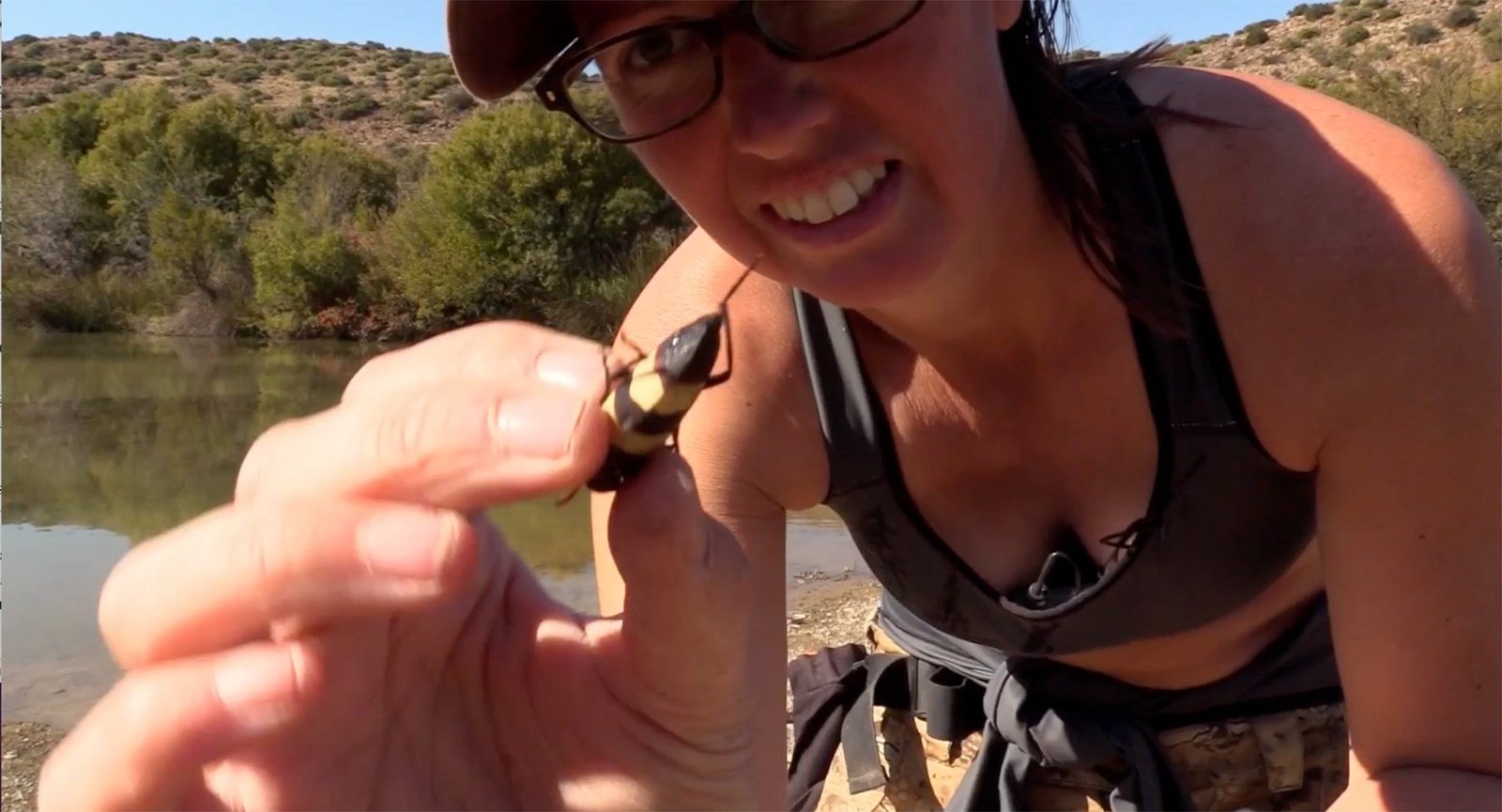
The survival reality show is quickly approaching its finale. Our articles editor assesses the strengths and weaknesses of the remaining contestants.
(Photo: The History Channel)
Published August 8, 2025 01:01PM
Perhaps its the dry air. Maybe it’s the thorny bushes and rocky terrain. Perhaps its the skittish nature of the warthogs, kudu, wildebeest, and other delicious animals roaming the plain.
For whatever reason, Alone Africa has had an attrition rate like no other season in the show’s history. And after 19 days, just three survivalists remain.
And of the three, one appears to be teetering on the edge.
(Spoiler Alert) Nobody tapped out during Alone Africa’s eighth episode, which aired on Thursday, August 7. But all three remaining participants—Katie, Kelsey, and Nathan—faced major setbacks.
Kelsey endured another fruitless hunt, and watched as her warthog jerky—she shot and killed a wild pig back on day 1—dwindled to just ten remaining pieces.
Katie also ventured into the backcountry to kill game, and tracked two wild boars across the bush-covered hills. But they escaped and she came back empty-handed, instead opting to once again eat seeds, berries, and roots that she foraged from the Karoo. To add insult to injury, Katie also was robbed by baboons.
Nathan suffered the worst calamity. For the last few days he’s been building a massive house out of sand and rocks, and on day 22 one of the walls collapsed, rendering the structure useless. Then, while fishing, Nathan’s two baited hooks became snagged at the bottom of a lake. He had to dive to the bottom of the frigid water and was only able to salvage one of the two hooks.
In each obstacle, the three survivalists revealed elements of their personalities and mindsets that, in my mind, are good predictors for how they will fare in the final two episodes. And while I don’t always like fixating on Alone’s eventual winner—the show is about more than just who stays out there the longest—I do believe it’s worthwhile to assess the strengths and weaknesses of the three survivors.
A Capable Hunter
Kelsey got out to an early lead in Alone Africa by stalking and killing a wild boar on the first day in the bush. Since then, she’s survived by eating the pig meat, which after three weeks is somehow still there.
The kill showed us just how talented Kelsey is with a recurve bow, and how accomplished she is at cleaning and processing a carcass amid an extreme environment. And huge kudos to her for her innovative water storage system, which has allowed her to venture into the backcountry without having to boil potable water all of the time.
But Kelsey’s major weakness appears to be the mindset that has crept in during the last few episodes. She doesn’t deal with setbacks very well, and has a hard time rebounding from calamity. It’s totally understandable, especially with hunger and malnutrition becoming a daily obstacle.
We saw this back in episode 3 when Kelsey’s shelter was flooded during a downpour. It was obviously a very traumatic and terrifying ordeal—one that other participants navigated as well. But since then, setbacks have really gotten to her.
Kelsey has sought positive energy from the animals she’s seen in the bush. But these bursts of happiness seem to be fleeting.
She’s also tripping into the pitfall that Woniya Thibeault wrote about in her most recent Alone column, which is thinking about her friends, pets, and life back home. As Woniya explained—[colon (:) When] when the mind wanders to normal everyday life, it’s a sign that the survivalist no longer enjoys living in the backcountry.
The All-Star Forager
Katie, meanwhile, seems entirely focused on her life in the Great Karoo desert. Like the others, she’s faced multiple setbacks: flooding, bad days of fishing, and a monkey stealing her warm hat. But after each challenge, Katie has responded with an extremely pragmatic and positive attitude.
Of the three, Katie seems like the one who has most embraced life in the Karoo. It feels like it’s her permanent home, and not just the site of a very challenging camping trip. And Katie has, for the most part, focused on her life out here and not on the one she temporarily left back home in Australia.
She’s turned her attention to other tasks, like building a windscreen for her shelter. And she’s also displayed highly advanced foraging skills that are far beyond that of any other participant on Alone Africa. She’s stayed alive for three weeks primarily by eating the native flora: acacia seeds, mint, prickly pear cactus, and roots.
In episode 8 we saw her forage native garlic and allium vineale, a wild onion, for a soup. She also ground grass seeds into a porridge, which she soaked and ate for breakfast. It was an impressive meal considering it lacked any fish or red meat.
But Katie’s weakness is the lack of protein in her diet. She caught a fish back on day 1, but since then has only eaten plants. And all of the foraging skills and the world’s most positive mindset, alas, won’t be able to overcome food insecurity of that level.
The Problem Solver
Of the three, Nathan is in the strongest position to win. He semi-regularly hauls in massive catfish from the lake near his camp. He has a temporary and a budding permanent shelter. And he has a problem-solving attitude that’s helped him navigate several setbacks.
Nathan can credit this mindset with his advantage in food. Earlier in the season he struggled to catch fish—the meaty catfish in his lake were biting through the fishing line. Nathan innovated. He doubled up the fishing line twice, then braided it together, essentially creating a super-duper mega-strong line that was capable of holding the big creatures. Since then, he’s hauled in at least four giant catfish, which can feed him for several days.
Nathan’s biggest setback came in episode 8, when the rock house he was constructing fell over. I worried that the calamity would send him into a mental spiral. After all, he’s expended considerable energy building the structure, which now appears to be ruined. But Nathan simply sat with the problem, worked it over, and found a way to continue. He also brought this energy to his stuck fish hooks. Despite losing one, he rebounded.
The access to fish, plus the positive mindset, make Nathan a heavy favorite. Sure, Nathan may get sick, suffer an injury, or simply get outlasted by Katie or Kelsey. If I were able to place a bet on Alone at a Las Vegas casino, I’d put $100 on him.
Destinations & Things To Do
‘The Road Less Eaten’ Explores Aquaculture in Three Maine Towns
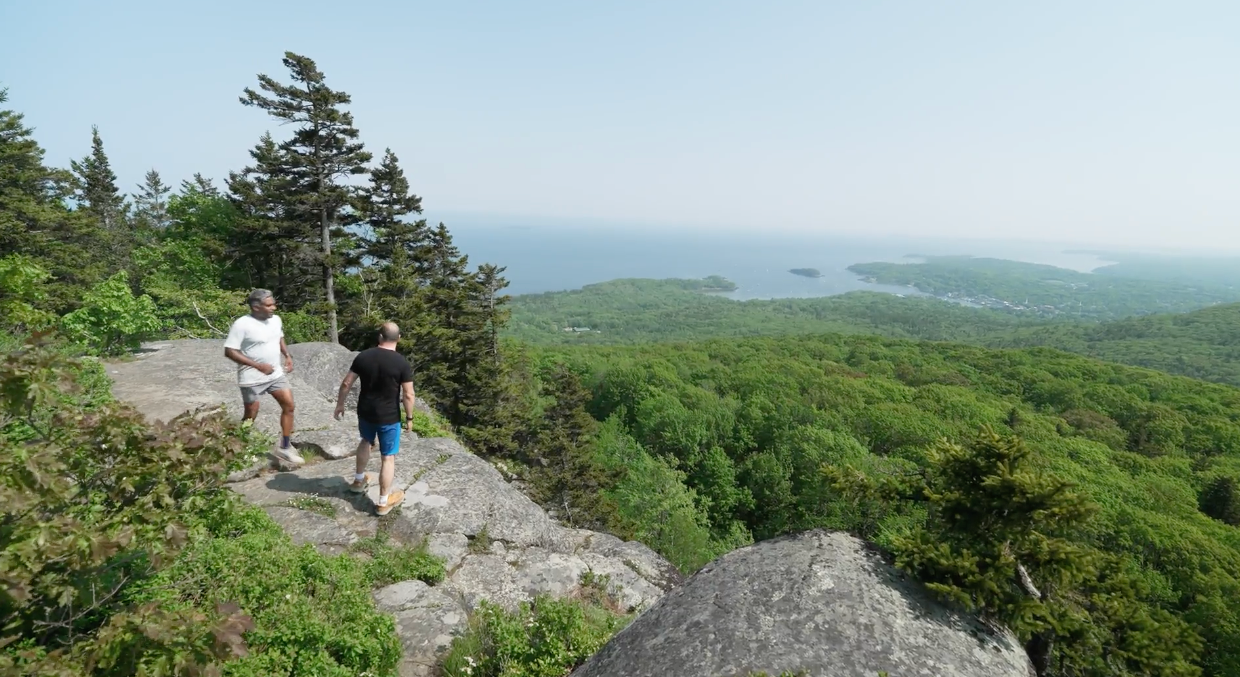
In the latest episode of The Road Less Eaten, chef and host Biju Thomas visits three coastal towns in Maine, and aquaculture as a whole
Chef Biju in Camden, Maine (Photo: The Road Less Eaten)
Published August 8, 2025 12:28PM
In the latest episode of The Road Less Eaten, chef and host Biju Thomas visits three coastal towns in Maine, where life has been shaped by the land, the sea, and as Thomas says, “the people who make a living from both.”
There is a term for this in the East: aquaculture. Along the coast in towns like Freeport, Camden, and Biddeford, aquaculture knits together communities, grows local and larger economies, and cares for the planet.
Thomas explores it— and coastal life in Maine— by learning from a kelp harvester, walking on (yes, on) acres of wild blueberry farms, and by sitting with award-winning chefs and cocktail engineers who all understand that along the coast of Maine, it’s not just about the food; it’s about the feeling.
Freeport
If you’re visiting Maine, you’ve probably got your mind set on lobster and oysters, but Maine’s food story runs much deeper.
Freeport, a shoe-making and ship-building hub that later turned into a food haven, as drawn world-wide attention for harvesting something much less common: kelp.
Ken Sparta, owner of Spartan Sea Farms and the Freeport Oyster Bar, harvests different kinds of kelp (sugar, skinny, winged) alongside oysters. Most know about oysters, but kelp? It’s nutrient rich, and if harvested right, tasty enough to be a main dish, not just a versatile ingredient.
Kelp is planted in Maine in the fall when the water temperature drops below 50 degrees Fahrenheit. When the temperature rises, the kelp is taken out of the water and driven into town. Fifty thousand pounds of kelp were harvested during the 2025 season in Freeport, Maine.
But what Ken geeks out about the most is the fact that harvesting kelp takes nitrogen and oxygen out of the water, therefore lowering ocean citification and making our planet more sustainable.
“I’m making food for my friends and family and making the ocean a better place,” he says.
Back at Freeport Oyster Bar, Thomas takes on kelp tacos and burgers. “If somebody didn’t tell me I wasn’t eating meat, I wouldn’t have known,” he says. Vodka is sustainably harvested from sugar kelp and distilled in small batches to sell at the bar, too.
Camden
Like Freeport, the small coastal town of Camden was once a 19th century ship-building hub, a protected harbor that eventually brought in artists and foodies alongside sailers. Camden quickly became known for its wild trails, blueberry farms and a food scene deeply rooted in tradition.
“Come late summer, the hills turn a deep, brilliant blue,” Thomas says, walking acres of wild blueberry farm alongside the owner of Brodis Blueberries, Jeremey Howard. “Wild blueberries aren’t the big plump ones you find at the grocery store,” Jeremy says. “They’re smaller, bright, with complex flavor.”
Brodis Blueberries has been running for nine generations, but the blueberries have been growing wild in this part of Maine for 10,000 plus years, though not a single patch was planted, Jeremy says.
“When the glaciers receded, they pushed away the fertile soil, and the only things that liked the acidic, ledgy soil, were blueberries.” Ron Howard, Jeremy’s father, explains how the different shades are different wild plants. Each is genetically different. These wild blueberries genetically modify on their own as they grow and thrive. There’s no need to mess with them.
Thomas tours Barren’s Distillery + Restaurant, where the shelves are stocked with blueberry gin, blueberry vodka, blueberry brandy, and more. The blueberries go through the fermentation process, and when they are complete mesh, (which is a wine at that point) they are put into a still that extracts the alcohol vapors.
“It tastes like booze with a kick of sweetness at the end, with the brandy warmth to it,” Thomas says.
Thomas also meets up with Jeremy’s business partner, Andrew Stewart on a trail run. “Apparently here, we hydrate with distilled fruit, then go run up a mountain,” Thomas jokes. The trails are closer to the ocean, and the views are unreal.
Stewarthelped launch Barren’s waterfront restaurant downtown. It’s become known for its seafood classics alongside its full line-up of blueberry spirits.
Biddeford
Along the Saco river, the town of Biddeford draws in the artistic and the young. It’s a hip, developing area that once stood out in the booming textile industry through the 1900s. Those same mills are now full of chefs and artisans like Kate and Jason Hamm, co-owners of Fish and Whistle, and semi finalists in James Beard awards’ emerging chef category.
Fish and Whistle’s main event is its fish and chips, but the happenin’ new place also serves up some seriously unique sandwiches, like the “squidwhich,” a sandwich full of squid, swallowed up by scored and fried milk bread, and smothered in marina and hot cherry peppers— a seafood lover’s dream.
All the seafood at Fish and Whistle is caught fresh from the gulf of Maine, the couple says.
Thomas also visits Magnus on Water, where he chats with Brian chats with Brian “Cat” Catapang, director of beverage working alongside owner of the place, Julia Russell, to create an incredibly experience for those bustling through Biddeford.
Russell sees Magnus on Water as a neighborhood bar and destination restaurant. It is one of only 37 bars (of 10 in the U.S.) recognized by the pinnacle guide to excellence in cocktail craft.
Thomas joins Catapang as he explains how the “couch surfer” was born, the restaurant’s bread and butter, and a love letter to Maine.
“I would go to the beach and check for surf, if I got skunked, I started collecting some of the high tide water to make some sea salt in house,” Catapang says. “The beach has magical properties that no one tells you about.”
Carrying five-gallon buckets during high tide, Catapang brings fresh salt water back into the restaurant to cook down and add to fresh pineapple juice and egg whites for stabilization. The liquor is made with poblano peppers, creating that zippy experience, just like waves that can pull you under.
Magnus on Water’s chef, Rafael Zimmerman, is constantly experimenting with Peruvian comfort food that makes for a fun menu. During his visit, Thomas tries the restaurant’s most popular dishes and is most impressed by the roasted cabbage, because its flavors catch him by surprise.
There is an energy forming in Biddeford, but not just there, in every quaint town with aquaculture at its core. There is a shared respect for tradition and nature, and for creative dishes and drink that truly embody coastal living.
-

 Brand Stories3 weeks ago
Brand Stories3 weeks agoBloom Hotels: A Modern Vision of Hospitality Redefining Travel
-

 Brand Stories2 weeks ago
Brand Stories2 weeks agoCheQin.ai sets a new standard for hotel booking with its AI capabilities: empowering travellers to bargain, choose the best, and book with clarity.
-

 Destinations & Things To Do3 weeks ago
Destinations & Things To Do3 weeks agoUntouched Destinations: Stunning Hidden Gems You Must Visit
-

 Destinations & Things To Do2 weeks ago
Destinations & Things To Do2 weeks agoThis Hidden Beach in India Glows at Night-But Only in One Secret Season
-

 AI in Travel3 weeks ago
AI in Travel3 weeks agoAI Travel Revolution: Must-Have Guide to the Best Experience
-

 Brand Stories1 month ago
Brand Stories1 month agoVoice AI Startup ElevenLabs Plans to Add Hubs Around the World
-

 Brand Stories4 weeks ago
Brand Stories4 weeks agoHow Elon Musk’s rogue Grok chatbot became a cautionary AI tale
-

 Brand Stories2 weeks ago
Brand Stories2 weeks agoContactless Hospitality: Why Remote Management Technology Is Key to Seamless Guest Experiences
-

 Asia Travel Pulse1 month ago
Asia Travel Pulse1 month agoLooking For Adventure In Asia? Here Are 7 Epic Destinations You Need To Experience At Least Once – Zee News
-

 AI in Travel1 month ago
AI in Travel1 month ago‘Will AI take my job?’ A trip to a Beijing fortune-telling bar to see what lies ahead | China

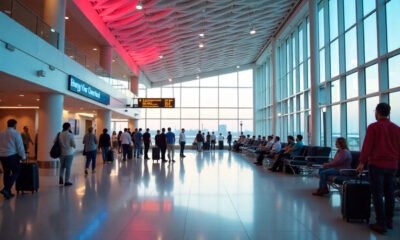

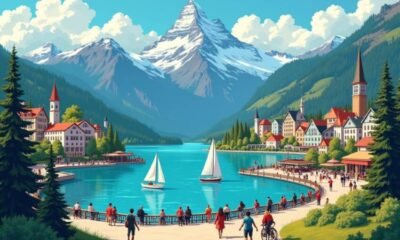

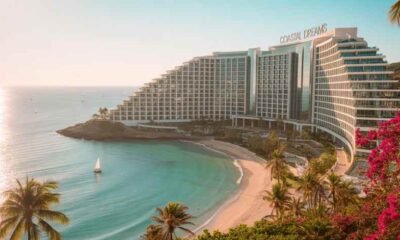

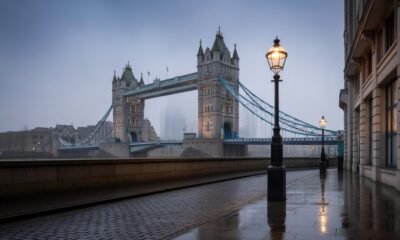





You must be logged in to post a comment Login